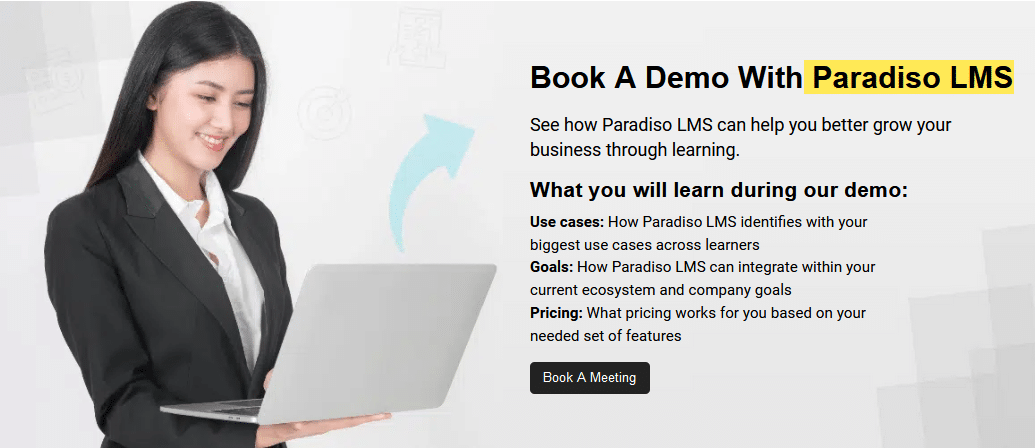Introduction: The Importance of Effective Employee Onboarding in 2025
In 2025, the landscape of workforce management continues to evolve rapidly, emphasizing the critical role of modern onboarding strategies. Effective onboarding goes beyond simple orientation; it establishes a foundation that influences employee engagement, productivity, and long-term retention. As organizations navigate technological advances, remote work, and diverse talent pools, how new employees are integrated into culture and operations directly impacts their success and contribution.
Industry research, such as Gallup’s studies, shows that structured onboarding improves new hire retention by 82% and boosts productivity by over 70%. These compelling statistics highlight how strategic onboarding reduces turnover costs and cultivates a committed, capable workforce. In an era where employee experience is a key differentiator, leveraging digital tools, personalized learning, and continuous engagement through modern onboarding practices is more vital than ever.
Organizations investing in innovative onboarding methods are better positioned to develop agile, motivated teams ready to adapt to market shifts. This article explores the significance of effective onboarding and best practices to help companies thrive in the contemporary business environment.
1. Define Clear Onboarding Goals and Expectations
Setting well-defined onboarding goals is essential for integrating new hires effectively and ensuring a smooth transition. Clear objectives provide direction, help measure progress, and enable early identification of gaps.
Set Measurable Objectives for a Successful Onboarding Process
Effective onboarding begins with SMART (Specific, Measurable, Achievable, Relevant, Time-bound) goals tailored to roles and organizational priorities. Examples include:
- Skill Acquisition: Attain proficiency in essential tools within the first 30 days, confirmed through training completion.
- Cultural Integration: Receive positive feedback on cultural fit surveys after 60 days.
- Performance Benchmarks: Meet specific targets or milestones within designated timeframes.
Measurable goals allow organizations to track progress, offer targeted support, and foster accountability.
Communicate Company Culture and Role Expectations Effectively
Beyond task goals, clearly conveying company values, mission, and expected behaviors helps create a cohesive environment.
- Onboarding sessions that highlight core principles and leadership philosophies
- Detailed role descriptions, responsibilities, and success metrics
- Mentorship or peer programs reinforcing organizational norms
Transparent communication aligns new hires’ behaviors with organizational standards, increasing engagement and reducing misunderstandings.
2. Develop a Structured Onboarding Plan
An effective onboarding plan ensures smooth integration of new employees. A tailored schedule promotes engagement, accelerates productivity, and aligns newcomers with company goals.
Why a Structured Onboarding Plan Matters
Structured onboarding reduces ambiguity and uncertainty, which increases retention and satisfaction. Data from Glassdoor indicates such programs improve retention by 69% and productivity over 70%. Customizing onboarding per role minimizes overload and ensures relevance.
Key Components of an Effective Onboarding Schedule
- Role-Specific Training Modules: Focused training aligned with job responsibilities.
- Departmental Integration: Activities promoting team interaction and understanding workflows.
- Cultural Orientation: Sessions emphasizing company values, mission, and community involvement.
- Clear Timeline: Defined milestones such as 30/60/90 days, with progress tracking.
Tailoring for Different Roles and Departments
Collaborate with HR and team leads to craft role-specific schedules. Technical roles may involve mentorship and project-based onboarding, while customer-facing positions emphasize product training and communication skills. Customization ensures relevance and promotes early contribution.
Ensuring Consistency and Comprehensiveness
Use templates, checklists, and onboarding software like Learning Management Systems (LMS) to standardize and streamline onboarding. Regular updates based on feedback help maintain quality and coverage.
3. Leverage Technology for Seamless Onboarding
Utilizing technology is essential in delivering efficient onboarding in today’s digital landscape. Innovative tools accelerate processes, enhance engagement, and ensure consistency across the organization, keeping organizations competitive in 2025.
Harness Digital Onboarding Platforms
Digital platforms centralize onboarding activities, offering a single interface for forms, training, and resources. Automation reduces administrative burdens and shortens time-to-onboard from weeks to days. Integrated systems sync with HR databases for real-time updates.
Automate and Personalize the Journey
Automation tools enable role-based and location-based personalization. AI-powered chatbots can answer FAQs, while customized paths guide employees through relevant content, increasing engagement and retention from day one.
Incorporate VR and AR Technologies
Virtual and augmented reality offer immersive onboarding experiences—simulating workplace environments, safety protocols, or equipment handling—particularly useful for remote teams. These methods enhance understanding and confidence effectively.
Utilize Data Analytics for Continuous Improvement
Advanced analytics track engagement, completion, and feedback data, helping organizations refine onboarding strategies and predict future challenges, ensuring ongoing enhancements.
Embrace Mobile-First Solutions
Mobile-friendly platforms enable new hires to access content anytime, anywhere, fostering flexibility and faster onboarding, especially for remote or field employees.
Future Trends
Emerging technologies like AI assistants, blockchain for credentials, and integrated Learning Experience Platforms (LXP) promise even more personalized and efficient onboarding experiences in 2025 and beyond. Staying ahead involves adopting these innovations.
Smart implementation of these tools ensures onboarding is scalable, engaging, and effective—driving organizational success and attracting top talent.
🚀 Ready to See Paradiso LMS in Action?
Let’s show you how Paradiso LMS can work for you.
4. Provide Engaging Pre-Onboarding Activities
Pre-onboarding activities set the tone for a positive experience, easing anxieties, and building anticipation. Thoughtful engagement before day one creates a welcoming environment and streamlines integration.
Building Excitement & Early Engagement
Interactive activities such as personalized welcome messages, virtual meet-and-greets, or culture videos foster excitement. Sharing stories and success stories helps new hires visualize their role’s importance, increasing motivation and a sense of belonging.
Sharing Documents Effectively
Provide essential materials—handbooks, benefits info, forms—via secure digital portals. Use multimedia like videos and infographics for clearer understanding, facilitating smoother transition on the first day.
Early Communication Strategies
Send personalized emails outlining upcoming activities and points of contact. Virtual coffee chats and Q&A sessions help answer questions proactively, reducing first-day stress and promoting familiarity.
Interactive Activities for Connection
Activities like online introductions, quizzes, or collaborative tasks via Slack or Teams foster community and teamwork early on. Such engagement nurtures a supportive onboarding atmosphere.
In summary, pre-onboarding that combines transparent communication, document sharing, and interactive efforts enhances engagement, accelerates learning, and fosters a positive first impression, setting the stage for dependable onboarding success.
5. Assign a Dedicated Onboarding Buddy or Mentor
Pairing new hires with a mentor or onboarding buddy accelerates social and professional integration. This support system enhances learning, reduces anxiety, and fosters belonging from the start.
The Importance of Peer Support
Research underscores that mentorship increases job satisfaction and retention. Peer relationships promote social connection, reduce onboarding stress, and improve assimilation speed, leveraging the experience of existing employees.
Key Benefits of Mentorship Partnerships
- Facilitates Social Connection: Builds relationships and fosters team integration.
- Accelerates Learning: Tailors guidance and shares practical insights to shorten ramp-up time.
- Supports Cultural Fit: Embeds organizational norms through role modeling.
- Reduces Anxiety: Provides reassurance and feedback, boosting confidence.
Best Practices for Mentorship Programs
- Careful Pairing: Match based on roles, interests, and personalities.
- Structured Frameworks: Define roles, expectations, and goals for mentorship.
- Regular Check-ins: Foster ongoing dialogue and progress reviews.
- Recognition: Incentivize mentors to encourage engagement.
6. Incorporate Interactive Training Modules
Adding interactive training modules enriches onboarding by boosting engagement and knowledge retention. Multimedia, gamification, and scenario-based learning create immersive experiences that accommodate diverse learning styles and make training more effective.
Enhancing Engagement Through Multimedia Content
Videos, animations, and infographics make training visually appealing and easier to digest. Studies show multimedia can enhance retention by 60%, helping clarify complex topics like workplace safety or technical systems.
Leveraging Gamification
Elements like points, badges, and leaderboards motivate employees through friendly competition. This approach increases participation and reinforces learning, with research noting engagement boosts over 30% and retention through repeated interaction.
Creating Interactive, Experiential Content
Quizzes, simulations, and case exercises allow hands-on practice. Virtual customer interaction scenarios or safety drills prepare employees practically, aligning with adult learning principles that emphasize active involvement for deep understanding.
Effective Implementation Tips
- Integrate multimedia and gamification seamlessly into onboarding pathways.
- Ensure content is mobile-compatible for flexible access.
- Monitor progress and adapt content based on identified gaps.
- Collect feedback to continually improve modules.
By incorporating engaging and interactive training elements, companies foster dynamic learning environments that speed up onboarding and lay a foundation for ongoing development. Platforms like Paradiso LMS support the design and deployment of these innovative, scalable e-learning solutions.
7. Foster a Culture of Inclusion and Feedback
Creating an inclusive and feedback-rich environment enhances onboarding and supports long-term success. Valuing diversity and encouraging open communication promote engagement, innovation, and a sense of belonging.
The Role of Inclusion
Inclusion ensures all employees feel respected and have equal opportunities. Studies link inclusive cultures to better financial performance and higher engagement. Early onboarding emphasizing diversity helps reduce feelings of isolation and accelerates cultural adaptation.
Encouraging Questions and Open Dialogue
Managers should promote psychological safety—an environment where questions are welcomed without fear. Practices include open-door policies, regular check-ins, and leadership modeling curiosity, which foster trust and transparency.
Promoting Feedback and Continuous Improvement
Structured channels like surveys and regular reviews encourage honest feedback. Specific, actionable comments support ongoing development and identify areas for change. A culture of feedback correlates with higher engagement and innovation.
Best Practices to Cultivate Inclusion and Feedback
- Implement onboarding programs emphasizing inclusion.
- Train leaders in inclusive leadership behaviors.
- Create safe forums for sharing ideas and concerns.
- Recognize and celebrate inclusive behaviors publicly.
- Use anonymous feedback tools to empower honest input.
Fostering a culture where questions and feedback are normalized nurtures learning, innovation, and a strong sense of belonging. Such environments build resilient, high-performing teams aligned with organizational values.
8. Introduce the Company’s Values and Mission Early
Early exposure to organizational values and mission fosters alignment, engagement, and a shared purpose. When new hires understand and connect with core principles, their contributions become more meaningful, and their commitment increases.
Why Early Introduction Matters
Understanding what a company stands for guides behavior and decision-making. Gallup research indicates that employees who identify strongly with company purpose are more engaged and productive. Early immersion reduces ambiguity and builds trust and expectations.
Effective Storytelling to Convey Purpose
Using storytelling—sharing founding stories, milestones, or values-in-action—evokes emotional resonance and makes abstract ideals tangible. Examples include narratives that highlight integrity, innovation, or customer focus.
Strategies for Assimilating Values & Mission
- Interactive onboarding sessions emphasizing core principles with real-life examples
- Mentor pairing with cultural ambassadors who embody company values
- Cultural workshops and team activities centered on organizational purpose
- Accessible multimedia resources illustrating history, mission, and culture
Benefits for Organizational Cohesion
Embedding values early enhances cultural fit, reduces turnover, and boosts productivity. When employees internalize organizational purpose, they demonstrate stronger commitment and alignment, fostering long-term success.
9. Measure Onboarding Success with KPIs
Tracking onboarding effectiveness through Key Performance Indicators (KPIs) ensures continuous improvement and alignment with organizational goals. Clear metrics enable data-driven decisions that enhance new hire success and retention.
Why KPIs Are Essential
KPIs translate subjective perceptions into measurable data, fostering accountability and refinement. They support justifying onboarding investments and demonstrate impact on productivity, engagement, and retention.
Important Metrics
- Retention Rate: Percentage of new hires remaining after 30/60/90 days
- Time-to-Productivity: Duration to reach full performance level
- Employee Engagement: Satisfaction and involvement measured via surveys
- Completion Rate: Percentage of onboarding tasks completed on time
- Feedback Scores: Satisfaction ratings about onboarding experience
- Early Performance Indicators: Goal achievement and peer reviews in initial months
Implementing and Using Data Effectively
Set targets, monitor regularly with dashboards, analyze root causes, and refine processes. Advanced tools like Paradiso LMS facilitate tracking and improve data analysis, enabling continuous onboarding optimization.
10. Leverage LMS Platforms for Continuous Learning
Implementing Learning Management Systems (LMS) supports ongoing employee development, making learning accessible, scalable, and aligned with organizational needs. LMS platforms are vital for fostering a culture of continuous growth and adaptability in 2025.
The Role of LMS in Supporting Development
LMS centralizes training content—videos, e-books, interactive modules—delivering consistent learning experiences. They allow learners to progress at their own pace and accommodate different learning styles, increasing engagement and retention.
Tracking and Measuring Progress
Advanced LMS features monitor completion rates, assessment scores, and skill development, providing insights into training effectiveness. This data helps optimize content and identify knowledge gaps, ensuring training ROI.
Impact on Employee Retention & Growth
Offering continual development opportunities boosts engagement and job satisfaction, leading to higher retention. Well-designed LMS drives professional growth and prepares employees for leadership roles.
Practical Uses of LMS
Onboarding, upskilling, leadership training—LMS platforms support all training needs. Integration with HR systems streamlines administration and compliance tracking.
The Future of LMS
Emerging trends include AI personalization, adaptive learning, and immersive tech like virtual reality. These innovations will make learning more engaging and tailored in 2025 and beyond.
Investing in LMS platforms like Paradiso LMS enables scalable, effective, and future-ready training ecosystems, crucial for organizational success.
11. Personalize the Onboarding Experience
Personalized onboarding tailors the journey to individual roles, backgrounds, and aspirations. It enhances engagement, relevance, and long-term retention by making onboarding more meaningful and aligned with each employee’s needs.
Understanding Personalization’s Impact
Tailored onboarding addresses specific skills gaps and career goals. SHRM research indicates that personalized onboarding improves retention by 25% in the first 90 days and accelerates productivity. Custom content reduces uncertainty, fostering a sense of belonging from day one.
Strategies for Personalization
- Role-Based Content: Develop modules tailored to job responsibilities and tools, e.g., CRM for sales or safety for manufacturing.
- Background Assessments: Use surveys or interviews to understand prior experience, preferences, and goals for customized pathways.
- Mentorship Pairing: Connect new hires with role-aligned mentors for targeted support and acceleration.
Using Technology for Personalization
Platforms like Paradiso LMS facilitate dynamic learning paths, personalized dashboards, and automated content recommendations, ensuring onboarding is relevant and engaging at scale.
Monitoring and Improving
Gather feedback and analyze KPIs to refine personalized content, ensuring continuous relevance and impact for new hires.
Overall, customization significantly boosts onboarding effectiveness, engagement, and retention by respecting individual diversity and needs.
12. Prepare for a Smooth Transition to Integration
Effective system or process integration hinges on strategic planning, especially during the critical first 90 days. Setting clear milestones and providing ongoing support minimizes disruptions and fosters long-term adoption success.
Establish Clear Milestones
Define specific goals such as completing training, pilot testing, measuring adoption KPIs, and achieving early wins. Regular reviews keep the project on track and boost confidence.
Plan for Ongoing Support
Sustain success with dedicated help desks, periodic training, feedback channels, and data analysis. Transparent communication reduces resistance and builds trust throughout the transition.
Tools like Paradiso LMS assist in change management, offering structured modules, progress tracking, and support resources for smoother implementation.
In sum, thoughtful milestone setting and persistent support ensure effective system adoption and long-term value realization.
Revolutionizing Onboarding in 2025 with Paradiso LMS
Today’s organizations recognize that effective onboarding is vital for engaging and retaining talent. Paradiso LMS offers a scalable, innovative platform to deliver personalized, interactive, and seamless onboarding experiences that increase engagement and accelerate time-to-productivity. From role-specific learning paths to immersive VR modules, Paradiso LMS empowers HR teams to create transformative onboarding journeys.
Case studies from leading companies demonstrate how Paradiso LMS reduces onboarding time, improves compliance, and elevates employee satisfaction. As we look ahead, integrating AI, AR, and adaptive learning will further enhance onboarding in 2025 and beyond.
To stay competitive and build a future-ready workforce, adopting advanced LMS platforms like Paradiso is the strategic step forward. Elevate your onboarding process and position your organization as a leader in talent management.












